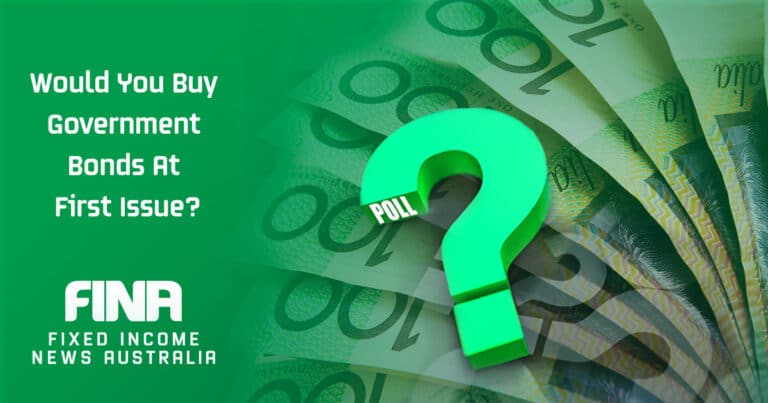
Deposit rates are incredibly low and in some cases zero, giving cashed-up investors who want to preserve capital very few choices.
One is to buy Australian Commonwealth Government Bonds (ACGBs), which they can do through the ASX. At the moment there are around 35 bonds available with yields to maturity that are close to zero out to approximately 2.75% for 30 years. Ten-year bonds are yielding around 1.70%, a huge step up compared to 0.25% for a five-year major bank deposit, even taking into account the five extra years until maturity.
Yet there are investors like Richard Browne, who is keen for personal investors to be able to invest in government bonds at first issue – see his correspondence to me below.
Recently, I attended your Toowoomba presentation and we spoke about the importance and attractiveness of Australian Government Bonds to investors. Those of us in retirement can’t afford to lose capital and are looking for a safe investment. Most are happy to accept lower returns for less risk but term deposits are a losing proposition.
Australian Government bonds would be an attractive investment except that you have to pay such a high market premium.
It has long been a mystery to me that the Government can’t see the value in making bonds available to retail investors at first issue. It would be good for investors and good for the country and provide secure income for retirees.
Would it not be better than an annuity that you have to buy from a retail provider?
I bet there would be a stampede!
I invest in bonds through FIIG Securities and hold fixed income ETFs.
Four reasons investors might like to access bonds at first issue
- They want the same opportunities as institutional investors.
- Buying at first issue means personal investors buy the bonds at $100 face value. If investors are ‘hold to maturity’ investors, the bond then acts more like a term deposit. Investors get a known, government guaranteed return until maturity when they know they will be repaid their capital.
- In the current market, psychologically, investors don’t have to pay a premium and accept a capital loss at maturity for an existing bond and vice versa. For example, there are three bonds with approximately 10 years to maturity available on the ASX:a) The GBSI30 maturing in May 2030, issued with a 2.50% coupon which last traded at $114.38 but has a valuation price of $109.44. The yield is 0.962%.
b)The GSBK31 maturing in June 2031, issued with a 1.50% coupon which last traded at $99.51 but has a valuation price of $98.97. The yield is 1.605%.
c) The GGBU31 maturing in November 2031, issued with a 1% coupon which last traded at $92.98 but has a valuation price of $93.51. The yield is 1.773%.
Which is better? The point here isn’t to highlight the best value bond, rather show the complexity of the decision and how buying at first issue simplifies the decision.
- If the bond is oversubscribed and there is pent-up demand, the bond start trading in the secondary market at a small premium, providing a gain at first issue for investors that are prepared to trade.
Liquidity and possible loss
The beauty of ACGBs is that they are generally very liquid instruments.
The downside being that investors take on interest rate risk – expected changes in interest rates can positively or negatively impact the bond price. So, while you can trade government bonds, if you need to sell and interest rates are expected to rise, the bond price may have declined since you bought the bond and you may make a capital loss.
The reverse is also true, lower expected interest rates will see bond prices rise and provide the opportunity for a capital gain.
Please respond to our poll
To try and gauge interest, we’re conducting a simple yes/ no poll. Please click on the button below and let us know if you would be interested in investing in government bonds if they were available at first issue.
(This poll is now closed, results were 75% in favour of investing in government bonds if they were available at first issue.)
For more information on current ACGB bond prices see the ASX Government Bond Price page on its website.
See our previous article Government Bond Basics and an excellent range of educational videos from the Reserve Bank of Australia explaining interest rates, monetary policy and asset prices, just to name a few topics.

































